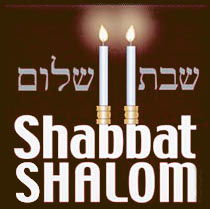Haftorah Shemot
This week, Sephardim and Ashkenazim read two different Haftorot, I will be writing this year on the Sephardic reading (Yirmiyahu 1:1-2:3), with the hope of next year writing a few words on the Haftorah the Ashkenazim read (Isaiah 27:6-28:13, 29:22-23).
There are several strong comparisons of the Haftorah to Parshat Shemot, most notably G-d appointing two different people to lead the Jewish people through a long time period. We learn how G-d ordered Moshe to lead the Jewish people while they were enslaved during the bitter years in Egypt, he very humbly did not want this position, which was a tough one, due to the fact the Jews were very much enslaved in Egyptian bondage, also Yirmiyahu was appointed by G-d to be the prophet for the Jewish nation a number of years prior to the destruction of the first Beit Hamikdash, he also did not want the position, since it led him rebuking the Jewish nation, which later on in life saw him being cruelly thrown in to jail.
Another strong comparison between Moshe and Yirmiyahu is that they both had an abundant amount of miracles occur during their respective tenures as leaders, notably Moshe having the Red sea split for him and the Jews, the ten plagues and much more. Also Yirmiyahu was saved many times, including by a man of the name Eved Melech HaKushi rescuing Yirmiyahu when he was lying almost dead in a pit (Yirmiyahu 38:7/ Moed Katan 28b). Another similarity between both these extraordinary prophets was that they both respectively had prominent roles for forty years.
The start of the Haftorah commences from the beginning of Sefer Yirmiyahu, describing how even when he was born he started off his prophecies. Similarly it is in Parshat Shemot that we are first introduced to Moshe.
The Haftorah almost immediately sums up his prophetic career, prophesying between the reigns of various Kings of Jehovah, from Yehoyakim to Tzidkiyahu (Yirmiyahu 1:3).
The Haftorah progresses describing how Yirmiyahu was even before his birth destined to be a prophet to the nations (Yirmiyahu 1:5), this is similar to the Parshah as Moshe, even before he had been born was already predicted to be the saviour of the Jewish people, even on the day of his birth the Egyptian astrologers decreed that all Egyptians babies were to be thrown in the river, since they foresaw the birth of the future Jewish leader.
As G-d was encouraging Yirmiyahu into his position as a prophet, he gave over signs of how torment was to befall the Jewish nation, via a stick of an almond tree and a bubbling pot (Yirmiyahu 1:11-13), similarly in the Parshah, Moshe was shown three different wonders which he was to demonstrate to the Hebrew nation in recognition that he was to be the future leader of the Jewish nation.
Just like Moshe was told by G-d that retribution was to come on the Egyptians for torturing the Hebrew nation, so too Yirmiyahu was given over prophecies how G-d was in the future going to punish the Hebrews, since they were unfortunately guilty of various sin's, most notably, burning incense to G-d's and having prostrated down to idols (Yirmiyahu 2:16).
The Haftorah concludes with G-d reminding Yirmiyahu how the Jewish nation followed him in the wilderness for forty years and how they lovingly and enthusiastically accepted the Torah (Yirmiyahu 2:2). G-d even compares the Jewish nation to his first fruits of crop (Yirmiyahu 2:3).

 Share on Twitter
Share on Twitter Visit our Facebook page
Visit our Facebook page